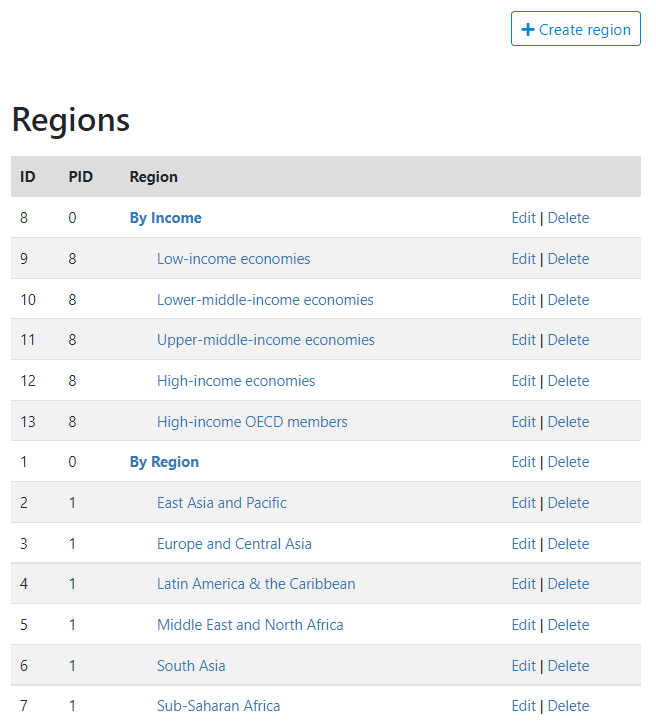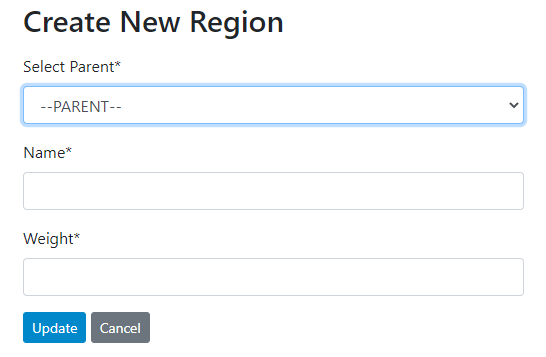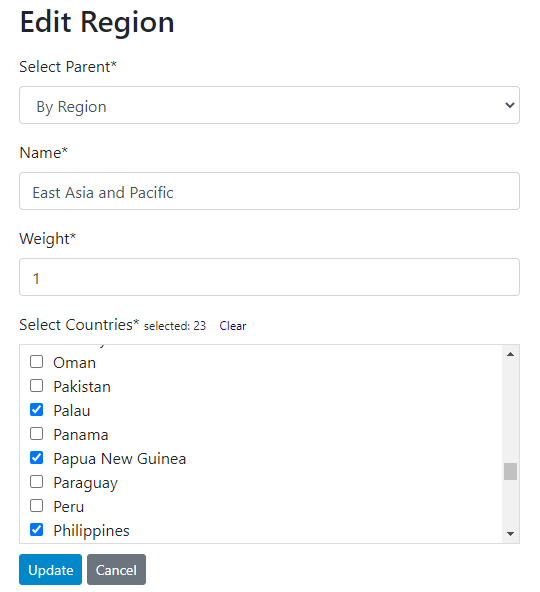# Regions

By region, we mean "country groups". The regions can be of different types, determined based on a geographic criterion (e.g., by continent), an administrative criteria (e.g., "OECD countries"), an economic criteria (e.g., high/middle/low-income countries), or other type of criteria (e.g., "landlocked"). In the example below, two types of groups are created: one by administrative region of the World Bank, and one by income level. Within a type, the groups do not have to be mutually exclusive. A country can belong to multiple groups.
# Using the administrator interface

A region or type of region is created by clicking on the "Create region" button, then entering the relevant information. If you create a region without specifying a "parent", you are creating a region parent. If you create a region and specify a "parent", you are creating a group within this parent group.

Once a region has been created, the countries that belong to it can be selected (from the reference list of countries). The "weight" argument is a numeric value that will determine the order in which regions are to be displayed. Lower weight higher or lower?

Groups can be edited or deleted; this does not impact the metadata in the catalog in any way.
# Using the API
Uploading and maintaining a list of countries
R
Python